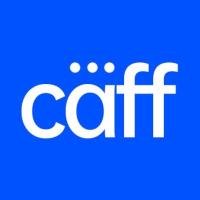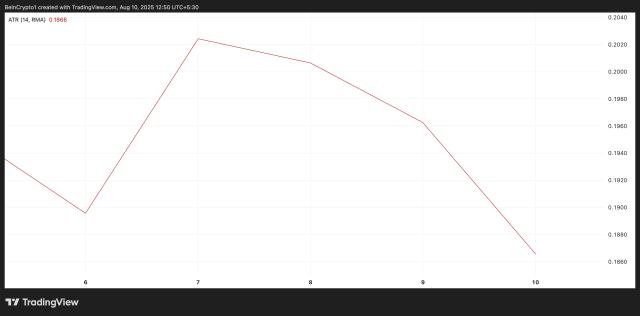Because of this, Ladislaus expressed optimism, "As long as we can find an honest prover that meets the hardware conditions, Ethereum can continue to run safely. We deliberately set the threshold below data centers, so even if it's not a large institution or data center, individual developers with technical capabilities can run a Prover at home".
The current hardware configuration of $100,000 is just an initial target. Ethereum Foundation researcher Sophia Gold predicts that mainstream Provers will meet the standards by the Devconnect Argentina Developer Conference in November this year.
Succinct co-founder Roy expects to reduce GPU requirements to around 16 graphics cards by early next year, with total costs controlled between $10,000 and $30,000.
Meanwhile, Succinct has built a decentralized network of "hundreds of Provers" on the testnet, generating millions of proofs.
The core logic of this system is competitive proof, where all Provers participate in bidding, with one winner selected each round to execute ZK proof, aiming to let participants with shorter time and lower costs win, forming a computing power bidding mechanism.
This means that in the ZK-driven Ethereum future, the miner spirit will reemerge in another form - with roles shifting from block mining to proof generation.
Mainnet Transition to ZK Architecture: A High-Difficulty System Migration
Switching Ethereum L1 mainnet to a zero-knowledge proof (ZK) architecture is another technical challenge almost equivalent to the 2022 transition from Proof of Work (PoW) to Proof of Stake (PoS). The entire process not only requires protocol layer reconstruction but must also carefully consider various potential edge scenarios and security risks to prevent network interruption.
At an EthProofs conference in July this year, researcher Justin Drake mentioned several potential risk concerns. For example, malicious attackers might insert "prover killers" into blocks, causing the entire network verification mechanism to fail; or network activity might sharply decline, with transaction fees insufficient to cover ZK proof generation costs, thus affecting network sustainability.
Ladislaus from the Ethereum Foundation's protocol coordination team stated that the entire transition might take several years, with particular attention to security risks. The ZK Virtual Machine (zkVM), as a complex technology still in its early stages, is likely to have various vulnerabilities. However, as the ecosystem matures, we can gradually improve its feasibility and robustness on Ethereum L1 through introducing proof diversity, improving incentive mechanisms, and formal verification.
Simultaneously, Ethereum plans to fundamentally restructure its consensus layer by building a new structure called "Beam Chain", designed to be ZK-optimization friendly from the start. Drake even suggests that future data validation for Ethereum could be completed on a CPU of an ordinary laptop.
Mainnet "Snarkification": Native Rollup is Coming
As zkEVM is integrated into the Ethereum mainnet, another long-term vision is gradually emerging: Native Rollup.
Current Rollups (whether Optimistic or ZK types) use independent proof systems, with security dependent on their own validator or sequencer mechanisms, involving certain trust assumptions with the Ethereum mainnet.
The vision of "Native Rollup" is completely different - by integrating zkEVM into the mainnet, allowing Ethereum L1 validators to directly verify Rollup state transition proofs, thereby achieving a truly L2 validated and secured by the mainnet.
This requires adding a key code segment "execute precompile" in Ethereum L1 clients, allowing validators to directly verify ZK state transition proofs generated by L2, as Ethereum Foundation protocol coordinator Ladislaus says, "L1 validators will consume these Rollup execution proofs and verify their correctness".
In other words, if Native Rollup becomes reality, in the future, whether a transaction occurs on L1 or on a Native Rollup, its final settlement and security will be guaranteed by the same group of Ethereum validators, with completely equivalent trust levels.
This means depositing $10 million on a Native Rollup would have the same security as directly depositing on the Ethereum mainnet.
Linea project lead Declan Fox states that their long-term goal is to become a Native Rollup, which he considers an "upgrade" to ETH 2.0 sharding - no longer rigidly running 64 structurally identical shard chains, but building heterogeneous Rollup systems in a highly programmable and customizable way to serve different scenarios and user needs.
Unlike the homogeneous shard architecture of past ETH 2.0, Native Rollup can be heterogeneous, providing more diverse and differentiated application experiences for end-users.
Although Native Rollup has not been formally written into the Ethereum roadmap, with zkEVM officially launching and L1 architecture gradually reconstructing, pre-setting interfaces and precompile logic for it has clearly become a foreseeable technological trend.

Ladislaus summarized, "In Snarkifying EVM (integrating ZK proof capabilities) and advancing Native Rollup, Ethereum has high technological synergy because they share the underlying ZK technology stack". Of course, this process still needs to go through Ethereum community governance, form an EIP (Ethereum Improvement Proposal), and ultimately be deployed in a hard fork.
Optimistically, if everything goes smoothly, relevant EIPs might be submitted by the end of the year and launched in the fork after the Glamsterdam upgrade.
However, this timeline remains highly uncertain and should be viewed cautiously.
Disclaimer: As a blockchain information platform, the articles published on this site represent only the personal views of the authors and guests, and are unrelated to Web3Caff's stance. The information in the articles is for reference only and does not constitute any investment advice or offer. Please comply with the relevant laws and regulations of your country or region.
Welcome to join the Web3Caff official community: X(Twitter) Account丨Web3Caff Research X(Twitter) Account丨WeChat Reader Group丨WeChat Official Account







